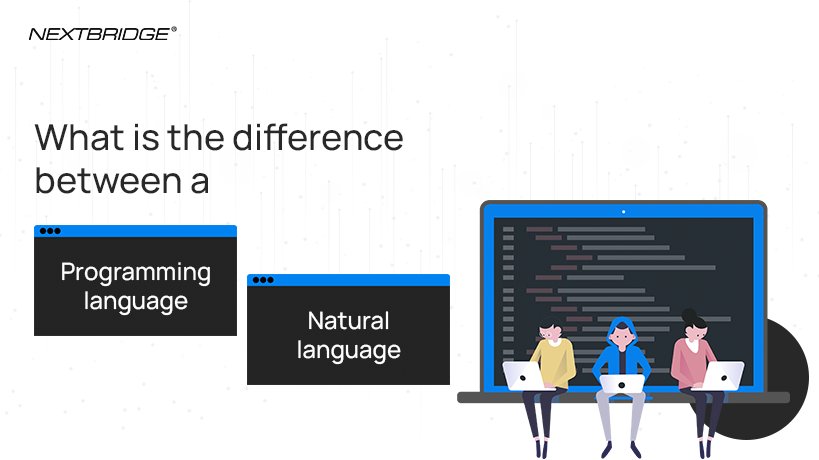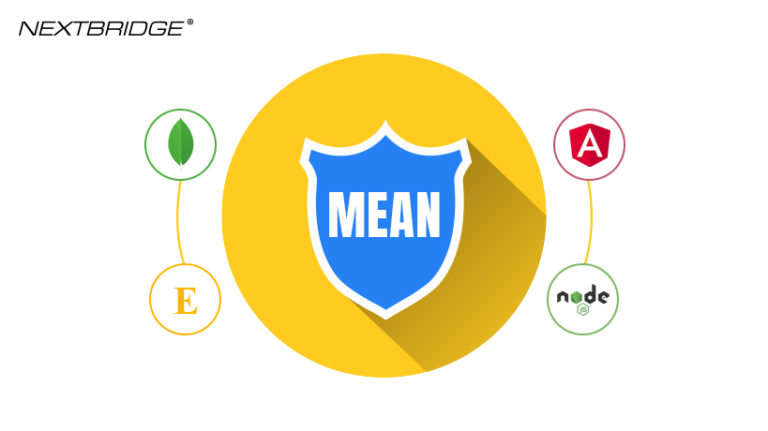If you are interested in computer programming, you might have wondered what is the difference between a programming language and natural language. In this blog post, we will explore the main characteristics and differences of these two types of languages, and why they are both important for programmers.
What is a programming language?

In this digital era the way we humans interact with computers and vice versa is through languages. Where we humans communicate through a natural language like English and many others, computers do not. Because they do not understand natural language, communication and instructions happens through programming languages.
But have you ever wondered how these two types of languages differ? In this blog post, we will explore the difference between programming language and natural language in a way that is easy to understand, even for 6th graders.
What is the purpose of Programming Languages?
The purpose of a programming language is to communicate with the machine to convey commands. Basically programming languages are used to write programs in a language and style that machines understand and then perform the tasks required. It is due to the programming languages that we are using different softwares and applications today.
HTML, CSS, and JavaScript is used to create web applications and websites. Java and Kotlin are for Android app where as Swift and C# are the main computer languages for creating iOS apps. Python and other general purpose languages can be used for almost anything from web to desktop, mobile and even for creating games.
A programming language is a formal language that consists of a set of symbols, rules and conventions that are used to create instructions for computers to perform specific tasks. Programming languages are designed to be precise, unambiguous and efficient, so that computers can understand and execute them without errors or misunderstandings.
Some examples of popular programming languages are Python, Java, C#, JavaScript, Ruby and PHP. Each programming language has its own syntax (the way the symbols are arranged), semantics (the meaning of the symbols) and pragmatics (the context and purpose of the instructions).
What is natural language?

Any language that is spoken or written by humans for communicating with other humans is called a natural language, simply known as a language. Natural languages are diverse depending on geolocation, region and culture.
They reflect the culture, history and creativity of humans. Difference between programming language and natural language is that the latter are flexible, expressive, and convey meaning, emotion and intention.
Some examples of natural languages are English, Urdu, Punjabi, Arabic, French and there are many more. Each language has its own grammar rules and how words are used & combined and its own vocabulary. The dialect and accent of even the same language changes from region to region, which is usually every 200KM.
What is the main difference between programming language and natural language?

Both, programming languages and natural languages have different goals, features and challenges. Here are some of the main differences between them:
Computer programming through coding language is created by humans for the purposes of communicating to machines. For tasks like web development, data analysis, game design and more. Natural languages evolve with time and computer languages are updated by humans with time.
Programming languages are deterministic, but natural languages are probabilistic. Coding languages have clear and concise rules which determine how the symbols should be interpreted and executed by computers. But, natural languages’ rules on the other hand depend on the context and the speaker’s intention which change from region to region.
Programming languages are formal, while natural languages are informal. Programming languages have a strict and rigorous syntax and semantics that must be followed to avoid errors or bugs. Natural languages have a loose and flexible syntax and semantics that allow for creativity and variation.
Programming language popularity has increased over time with an increase in demand for software development. They have predefined and limited symbols, rules and conventions that tell usage instructions. Natural languages have an infinite and dynamic set of words, rules and conventions that can be used to create texts.
What is the difference between programming and coding?
Coding is a part of programming. In both writing machines, understandable code is the core part. Programming specifically focuses on creating software surrounding code ratification. Coding on the other hand focuses on basic programming knowledge and skills without involvement of software tools.
Why are both programming languages and natural languages important for programmers?
This is one of the main aspects one should ponder upon while looking for the difference between programming language and natural language due to many reasons. For a programmer or software engineer having a strong grip on both a programming language and natural language is important to succeed in a career. If you are looking for such software developers then Nextbridge is the place to get started. Here is why:
Computer programming is important for effectively communicating with the machine for creating softwares and applications. Learning computer programming means you should know how to write clear, concise, bug free, and robust code that follows the latest industry standards and best development practices.
On the other hand, natural language is the way of communicating with humans, i.e. other programmers, clients, team members, and to read as well as create users documentation for your software applications. To write clear, comprehensive, and easily understandable texts format documentation which serves the purpose of explaining code functionality and features.
To succeed both these are required so that you can be a complete package, meaning you can communicate with the machine as well as with others to clearly convey the message.
You can use programming languages to practice your logical thinking, problem-solving and creativity skills, or to create new tools or resources for natural language processing.
Conclusion
Programming languages and natural languages have distinct characteristics and purposes. Programming languages are used to communicate with computers and provide precise instructions, while natural languages facilitate human communication and adapt to various contexts. Understanding the differences between these two language types helps us appreciate the importance of computer programming in our everyday lives.
Programming languages and natural languages are two types of languages that have different characteristics and purposes, but are both essential for programmers. By understanding the difference between them, you can improve your communication skills, both with computers and humans, and become a better programmer.
If you are looking for a team of professional programmers who can handle any programming language and natural language project, contact us today at vteams.com. We have the experience, expertise and passion to deliver high-quality software solutions that meet your needs and expectations. Don’t hesitate, get in touch with us now!





